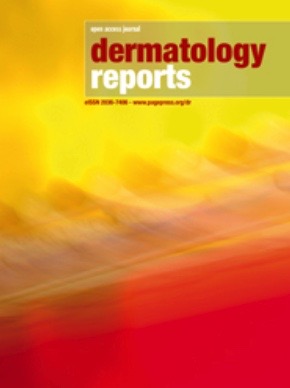Rosacea-like eruptions associated with upadacitinib in atopic dermatitis: two case reports and management strategies
All claims expressed in this article are solely those of the authors and do not necessarily represent those of their affiliated organizations, or those of the publisher, the editors and the reviewers. Any product that may be evaluated in this article or claim that may be made by its manufacturer is not guaranteed or endorsed by the publisher.
Authors
Atopic dermatitis (AD) is a chronic inflammatory skin disease often requiring systemic therapies for moderate-to-severe cases. Janus kinase (JAK) inhibitors, including upadacitinib, have emerged as effective options, targeting pro-inflammatory cytokines involved in AD pathogenesis. However, adverse dermatologic reactions, such as rosacea-like eruptions, have been observed, potentially linked to immune pathway modulation. This report describes two patients with severe AD who achieved complete disease clearance with upadacitinib but developed rosacea-like eruptions. Both cases required discontinuation of the drug and treatment with antibiotics, which resolved the symptoms. However, withdrawal led to AD flares in one patient, necessitating the reintroduction of upadacitinib at a reduced dose combined with prophylactic antibiotics. These cases underscore the efficacy of JAK inhibitors while highlighting the challenge of managing adverse effects. Individualized treatment approaches, including dose adjustments and adjunctive therapies, are essential for balancing AD control with tolerability. Further research is needed to optimize the management of these reactions.
How to Cite

This work is licensed under a Creative Commons Attribution-NonCommercial 4.0 International License.








